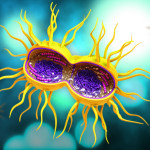Not only are significant drug-drug interactions common among people living with IV taking antiretroviral (ARV) therapy, but they are frequently overlooked by health care providers. These important findings were reported by a team of Liverpool researchers in the May 15 issue of Clinical Infectious Diseases.
“Unrecognized drug-drug interactions are one of the most common reasons for medication error with HIV drugs among the most therapeutically risky,” writes John Evans-Jones of the Royal Liverpool and Broadgreen University Hospitals NHS Trust and his colleagues. Failing to recognize these interactions, the authors point out, can result in blood concentrations of some drugs to fall below the levels needed to remain therapeutically active or to become elevated to the point where serious side effects are a risk.
Although previous studies have suggested that the risk of clinically significant drug interactions (CSDIs) is common, no study has assessed the extent to which these interactions are recognized and managed by health care providers.
Evans-Jones’s group asked HIV-treating physicians at the Royal Liverpool University Hospital to complete structured questionnaires. For each patient—a total of 159 were included in the study—the health care providers were told to record all prescription and over-the-counter medications being taken by the patient, along with any known recreational/illicit drugs. From there, the participating physicians were asked to identify potential CSDIs in the list of medications being used by each patient and to note any dosing changes to compensate for the interactions.
A total of 86 CSDIs were documented, occurring in 43 (27 percent) of the patients enrolled. Not surprisingly, patients using a protease inhibitor—a class of ARVs known for their many drug-drug interactions—faced the greatest risk of a CSDI.
Among the drugs most frequently involved in drug interactions including ARVs, antidepressants, antibiotics, statins (for cholesterol management) and recreational/illicit drugs.
Only 31 (36 percent) of the 86 CSDIs were correctly identified by physicians. There was a broad range of CSDIs observed, including interactions between antiretrovirals and with other classes of drugs, notably antidepressants, antibiotics, cholesterol-lowering statins, and recreational/illicit drugs.
“Poor physician recognition of CSDIs is not confined to HIV treatment and is also seen with other commonly prescribed medications,” Evans-Jones and his fellow authors write. “Nevertheless, the consequences of failure to recognize or to manage HIV CSDIs may be considerable, because over one quarter of CSDIs in our study had the potential to lower antiretroviral concentrations. Moreover, patients with CSDIs may present with ill‐defined symptoms or unexplained laboratory abnormalities.”
To better manage CSDIs—considered by the researchers to be “to a large extent unavoidable”—Evans-Jones and his colleagues argue that better medication recording is essential. “Computerized systems can support electronic prescribing; however, a systematic review of such systems showed that 55 to 91.2 percent of drug interaction alerts are ignored by physicians, probably because of ‘alert fatigue.’ Until such systems can be made more usable, we recommend that physicians are vigilant to the risks of CSDIs, use available drug information resources, and that the pharmacy department aid in identification of CSDIs and regularly audit prescribing practice.”
Concerned about possible drug interactions among the prescription medications, over-the-counter drugs and complementary therapies you’re using? Search our comprehensive Check My Meds database for drug-drug and food-drug interactions and print out a report to share with your health care provider.






4 Comments
4 Comments